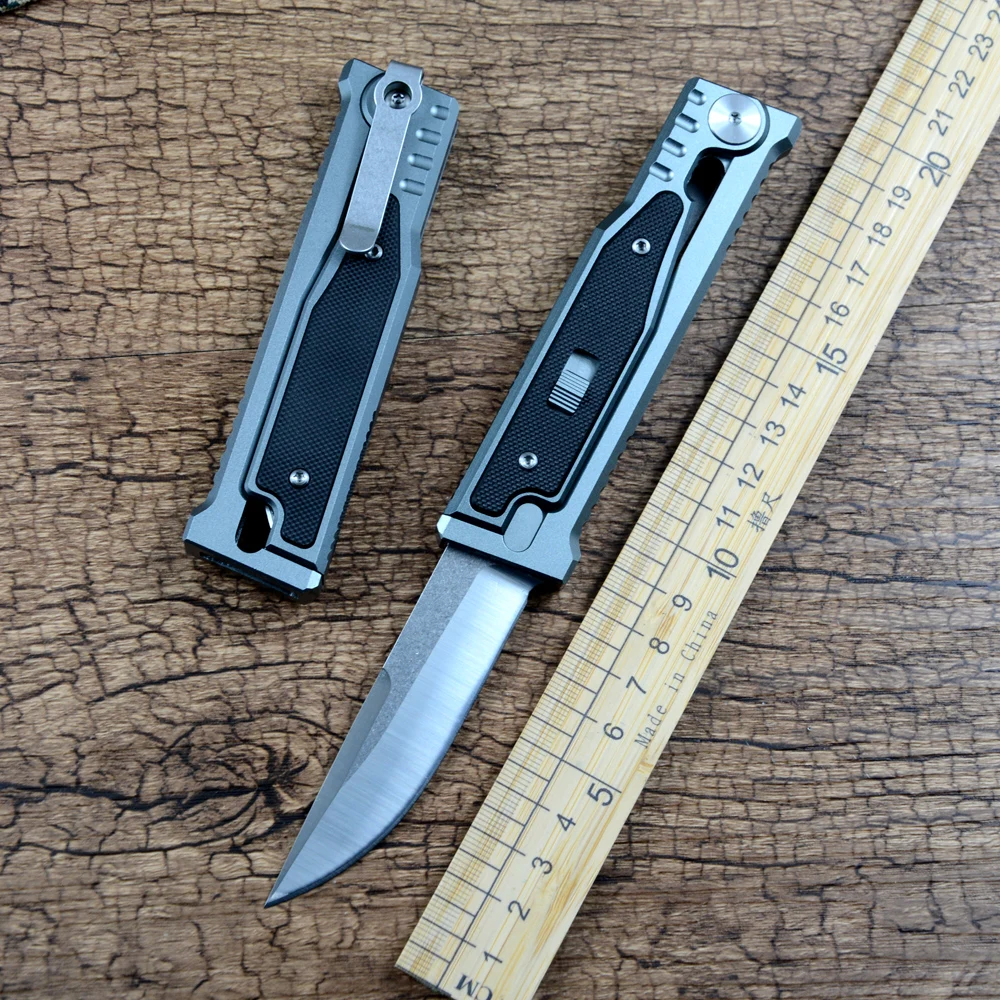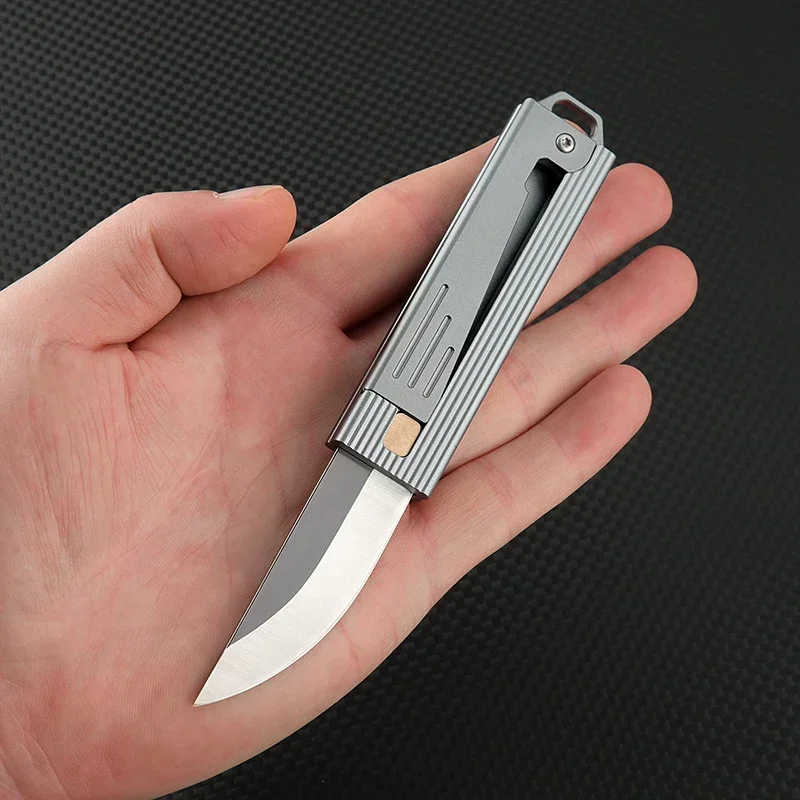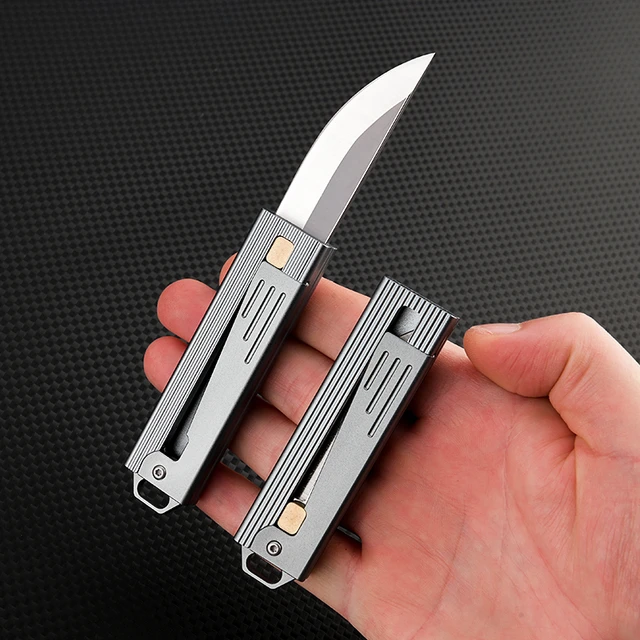Introduction:
Gravity knives have a long and storied history, evolving from military utility tools to controversial items with legal implications in various jurisdictions. Understanding their design, mechanics, and legal status is crucial for enthusiasts, collectors, and policymakers alike. This comprehensive guide delves into the intricacies of gravity knives, exploring their origins, functionality, and the complex legal landscape surrounding them.
Origins and Evolution:
Gravity knives trace their origins back to the early 20th century when they were primarily developed for military use. The concept behind these knives was to provide soldiers with a compact and versatile tool for various tasks, including cutting ropes, opening crates, and other utility purposes. The design of gravity knives allowed for one-handed operation, making them practical for soldiers in the field.
Mechanics and Design:
At the heart of a gravity knife is its unique opening mechanism, which relies on gravity and centrifugal force to deploy the blade swiftly. Unlike traditional folding knives that require manual manipulation to open, gravity knives feature a blade housed within the handle that can be released with a flick of the wrist or a press of a button. The blade is typically held in place by a locking mechanism that disengages when subjected to sufficient force or momentum.
The mechanics of a gravity knife vary depending on the specific design, but they generally operate on the principle of inertia. When the knife is held in a closed position, the blade is secured within the handle by a latch or locking mechanism. Upon applying downward pressure or a flipping motion, the blade is released from its housing and swings open under its own weight, guided by the laws of physics.
Legal Status and Regulations:
Despite their practical origins, gravity knives have become the subject of legal scrutiny and regulation in many jurisdictions. The classification of gravity knives varies widely depending on local laws and interpretations, leading to confusion and inconsistency in their legal status.
In some jurisdictions, gravity knives are classified as illegal weapons, subject to strict regulations and prohibitions on possession, sale, and manufacture. These regulations are often based on concerns about the ease of concealment, rapid deployment, and potential for misuse, particularly in urban environments.
Conversely, other jurisdictions may have more lenient or ambiguous regulations regarding gravity knives, leading to debates over their legality and enforcement. The interpretation of what constitutes a gravity knife versus a traditional folding knife can be subjective, further complicating matters for law enforcement officials and the legal system.
In recent years, efforts have been made to clarify and standardize the legal status of gravity knives, with mixed results. Advocates for knife rights argue for clearer definitions and distinctions between different types of knives, while lawmakers and law enforcement agencies grapple with balancing public safety concerns with individual rights and freedoms.
Origins and Evolution (Continued):
As gravity knives gained popularity among military personnel, their utility and ease of use spread to other sectors, including law enforcement, emergency services, and outdoor enthusiasts. Their compact design and quick deployment made them valuable tools in various professional and recreational settings.
Over time, gravity knives underwent design modifications and improvements to meet specific needs. Different variations emerged, such as automatic opening gravity knives that utilized a spring-loaded mechanism for even faster blade deployment. These designs further enhanced the speed and efficiency of the knife, making it a favored tool for those requiring rapid access to a sharp blade.
However, as gravity knives became more accessible and widespread, concerns arose regarding their potential misuse and safety implications. Their swift and effortless opening mechanism raised questions about accidental openings, especially when carried in pockets or bags. These concerns led to increased scrutiny and legal restrictions in many jurisdictions.
Mechanisms and Design Features:
Gravity knives come in a variety of designs, each with its own unique opening mechanism. Some common mechanisms include:
- Gravity Opening: In this type, the blade is held in place by a latch or locking mechanism. When the latch is disengaged, the blade swings open under its own weight due to the force of gravity. The user can initiate the opening by flicking the wrist or pressing a button to release the latch.
- Button Release: Some gravity knives feature a button or lever that, when pressed, releases the blade from the handle. This mechanism allows for quick and easy one-handed operation, similar to an automatic opening knife.
- Spring-Assisted Opening: This variation combines the benefits of a gravity knife with the convenience of a spring-assisted mechanism. When pressure is applied to the blade, the spring assists in the opening motion, adding extra force and speed to the deployment.
Legal Status and Regulations (Continued):
The legal status of gravity knives varies significantly worldwide and even within different regions of the same country. Some jurisdictions have enacted strict regulations, classifying gravity knives as prohibited weapons. These regulations often focus on factors such as blade length, deployment speed, and concealability.
In contrast, other jurisdictions have looser restrictions or no specific laws addressing gravity knives, leading to ambiguity and inconsistent enforcement. This lack of clarity can create challenges for both knife users and law enforcement officials, as determining whether a specific knife falls into the gravity knife category may be subjective.
It is essential for knife enthusiasts and individuals who carry or wish to acquire a gravity knife to familiarize themselves with the legal framework in their jurisdiction. Researching local laws, consulting legal professionals, and contacting relevant authorities can help ensure compliance and prevent any unintentional violations.
 Conclusion:
Conclusion:
Understanding gravity knives requires a nuanced appreciation of their design, mechanics, and legal implications. While these knives have a practical heritage rooted in military utility, they have also become symbols of controversy and legal ambiguity in many jurisdictions. As policymakers, enthusiasts, and stakeholders navigate the complex landscape surrounding gravity knives, a thoughtful and informed approach is essential to address concerns about public safety while respecting individual rights and freedoms.
As regulations evolve, it is important for individuals to stay informed about the laws governing gravity knives in their respective jurisdictions. By doing so, stakeholders can contribute to discussions surrounding the responsible use and ownership of these knives while promoting public safety and respecting legal boundaries. 


